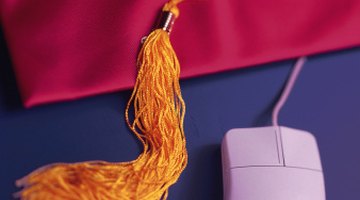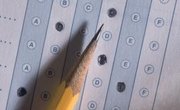The General Educational Development (GED) degree, is a degree that people who didn’t receive their high school diploma can earn to replace it. There are a variety of tests and courses you must complete before finishing your GED. One of the tests you can take is the TABE test. The TABE test and its various scores can help you figure out how well you’ll do on your GED.
Even if you already have a high school diploma, you may encounter the TABE test. Some schools require applicants to take the exam before enrolling in associate degree or technical certificate programs. Schools use these scores to determine whether students need remedial math or English courses. Some organiations require candidates to take this exam before working as civil servants, such as firefighters.
What is the TABE?
TABE stands for Test of Adult Basic Education. Educators developed this exam as a way to test an adult’s comprehension of various basic knowledge skills. It is not a pass or fail type of test. Instead, it is used to decide what courses a student will have to take to catch up. A student who struggles in a specific section can take remedial courses to boost his knowledge.
The content areas of the basic test include:
- Reading
- Spelling
- Mathematics
- Language
- Language Mechanics
- Vocabulary
The TABE test also offers advanced exams in:
- Writing
- Science
- Social Studies
- Algebra and Geometry
Students who do well in a section may be able to skip certain courses altogether. Low scores in a specific section can help learners know what areas to study before the GED test. Furthermore, it can help schools create personalized education plans for students.
The Unique TABE Format
The TABE tests three different sections of knowledge: reading, math and language. Students start by taking what is called a locator test. The locator test is a 30-minute test designed to decide how difficult the GED test will be for each student.
The four levels of difficulty include:
- L, which stands for limited literacy
- E, which stands for easy
- M, which stands for medium
- D, which stands for difficult
Some TABE tests also include a fifth level, called A for advanced. The GED TABE test uses this level.
Students who use prepare for the GED use their TABE locator scores to determine their level, but schools and hiring organizations may set levels and allow students to skip this part. Once testers get their testing levels, they complete the full TABE test. They have three hours to complete 195 questions. Students choose between paper and computer tests.
TABE Test Scoring
Each test calculates a numeric score between 300 and 600. TABE scores and interpretations help learners understand at which grade levels they understand each subjet. For example, anything below 392 indicates an understanding of the knowledge equivalent to a kindergartner to second grade student. A score of 392 to 490 indicates understanding similar to a second grader to a fourth grader.
Earning a score of 491 to 523 indicates you know as much on the subject as a fourth to sixth grade student. Scoring 524 to 559 indicates you posses the abilities of a sixth to eighth grade student in that subject. A score of 560 to 585 indicates a knowledge level of a ninth to 11th grade student while anything above 585 indicates a junior or senior level ability.
Study for the TABE Test
There are many ways you can study for the TABE test. There are sample tests available that will give you a score. Websites such as Study Guide Zone also offer an assessment of your score, giving you tips on where you are weak and how to improve your knowledge of this information.
However, the TABE tests the comprehension level in a way that it makes it hard to improve your score. For example, if you have a fifth grade understanding of a subject, it will take a lot of studying before you can advance to a 10th grade understanding.
Related Articles
Writer Bio
Eric Benac began writing professionally in 2001. After working as an editor at Alpena Community College in Michigan and receiving his Associate of Journalism, he received a Bachelor of Science in English and a Master of Arts in writing from Northern Michigan University in Marquette.











